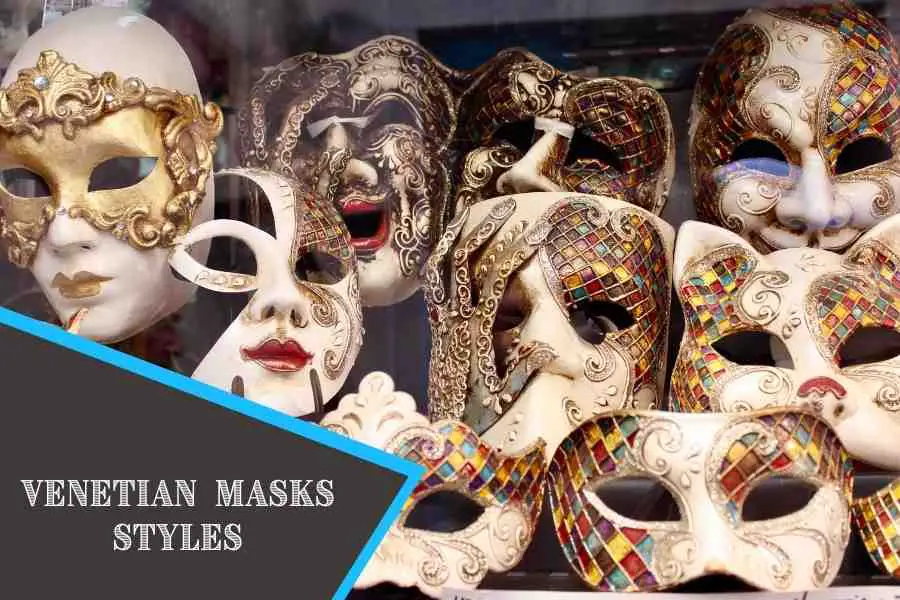Venetian masks have a rich heritage that can be traced all the way back to the earliest Carnival of Venice celebrations in the 1100s. Over the course of time, these masks have developed into five traditional styles—the bauta, the columbina, the pantalone, the volto, and the zanni. Each of these mask styles has their own unique history, and it’s believed that that people originally chose to wear a particular style based on their own occupation. Below, you’ll find a short explanation about the five different types of Venetian masks and an example of each. These fascinating styles are a testament to the rich and robust culture of Venice, as well as window into the history of the city of Venice.
Bauta Masks
The bauta mask is a style that covers the entire face of the wearer and is notable for its strong jaw line, heavy brow, and lack of mouth. Traditionally these masks were unornamented and painted white, but over time it also became customary to guild them with gold leaf. These masks were used to ensure anonymity at political events and were typically only worn by men. Over time, the wearing of the bauta became regulated by the Venetian government—they enforced its wearing a certain important events and prohibited those who were wearing it from carrying weapons.
Columbina
The columbina mask (also known as the “hero”) covers only the upper half of the wearer’s face and is often decorated heavily with accessories such as feather or crystal. It was originally the female equivalent of the bauta mask, but over time both women and men began to wear it.
Pantalone
The pantalone is often referred to as a “short nose” mask and has its origins in Italy’s legendary Commedia dell’arte, a form of masked theater that originated in the 16th century. Like the columbina, the pantalone is a half-mask and features a crow’s beak with a very high and pronounced brow. Within commedia productions, the pantalone was used to signify intelligence.
Volto
The volto (literally: face) mask covers the full face to ensure complete anonymity. Traditionally it is painted completely white, although it also common to see volto masks that have been gilded and embellished with rhinestones. Unlike some of the more grotesque, over exaggerated commedia masks, the volto displays relatively normal-looking human features. Because this is a full-face mask, it’s practical limits are quite evident—wearers are unable to eat or drink with a volto mask since it extends all the way down to the chin.
Zanni
The zanni mask is known for its trademark ridiculously long nose and low brow and has its origins, like many of the other mask styles, in commedia theater. Within this tradition the zanni was used to portray and incredibly stupid person, and it’s said that the longer the nose on the zanni, the dumber the person was! Unlike many of the other styles of mask, the zanni is made of leather, instead of the more traditional papier-mâché.





